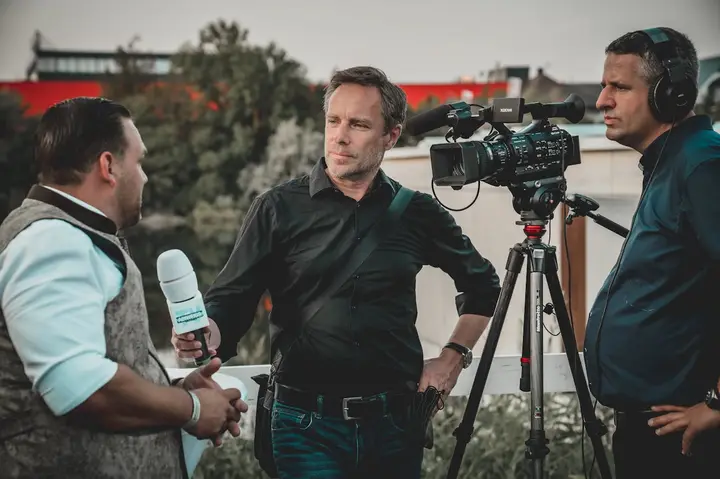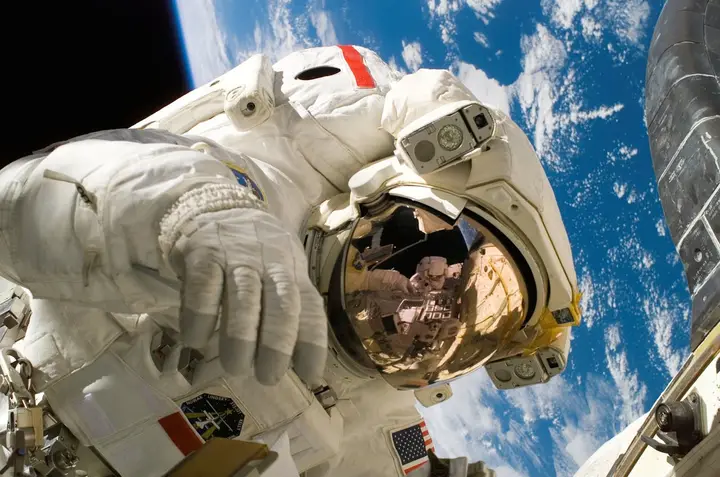The Improbable Threat of Primordial Black Holes: A Cosmic Perspective
Posted by: sunxin 3 months, 3 weeks ago
In the vast tapestry of the cosmos, our understanding of the universe's most enigmatic components continues to evolve. One such mystery lies within the concept of primordial black holes (PBHs) — a hypothetical breed of black holes born from the extreme conditions of the early universe. But what if these cosmic relics posed a threat to life as we know it? Let's delve into the realm of possibility and probability.
The Elusive Center: Unveiling the Mysteries of the Universe
Posted by: sunxin 3 months, 3 weeks ago
Have you ever gazed up at the night sky, feeling an innate pull towards the celestial dance above? For millennia, humanity has been captivated by the vast expanse, yearning to decipher its silent secrets. Where do we fit in this grand tapestry? Are we at the heart of it, or merely inconsequential whispers in an unfathomably grand scale?
The Cosmic Party Exploded: Unveiling the Universe's Largest Explosion
Posted by: sunxin 3 months, 3 weeks ago
What if I told you that scientists have just witnessed the most colossal explosion in the history of the universe that we can observe? An event so massive that it could encompass 15 Milky Way galaxies within its fiery embrace. This titanic explosion originated from a black hole nestled within a galaxy hundreds of millions of light-years away. How did we discover this cosmic marvel? Let's dive in.
Unreported Scientific Breakthroughs: A Journey Through the Unknown
Posted by: sunxin 3 months, 3 weeks ago
Are you curious about the wonders of the universe that never make it to the evening news? With war, politics, and celebrity gossip dominating headlines, it's no surprise that groundbreaking scientific discoveries often go unnoticed. In this article, we're about to embark on an extraordinary journey from the frigid sleep of space travelers to the mysterious depths of Saturn's sixth moon. Hold on tight; it's going to be a strange and wild ride.
The Mysterious Disappearance of VVV-WIT: A Star's Enigmatic Behavior
Posted by: sunxin 3 months, 3 weeks ago
Are you ready to delve into one of the universe's most captivating mysteries? Imagine a star, roughly ten times the size of our sun, vanishing before our eyes, not for a fleeting moment, but for a staggering 200 days. This isn't a figment of the imagination; it's the reality of a celestial enigma that has left scientists scratching their heads. Let's explore the intriguing case of VVV-WIT, a star that has taken the concept of "disappearing acts" to cosmic proportions.
Unraveling the Enigma: The Quest to Find a Wormhole
Posted by: sunxin 3 months, 3 weeks ago
Have you ever wondered if the quickest path between two distant points in the universe could be a shortcut we've yet to discover? Imagine traversing the vast cosmic expanse in mere minutes, bypassing light-years of empty space. This isn't just a flights of fancy for science fiction writers; it's a concept rooted in theoretical physics. Welcome to the fascinating world of wormholes. But are they merely figments of our imagination, or could they be hidden treasures of the cosmos waiting to be found? Let's embark on a journey to uncover the secrets of these enigmatic cosmic gateways.
The Cosmic Quest for Extraterrestrial Life: Are We Alone in the Vast Universe?
Posted by: sunxin 3 months, 3 weeks ago
Have you ever gazed up at the night sky, feeling the overwhelming vastness of the cosmos and wondered if we are truly alone? The quest to find extraterrestrial life has captivated humanity for centuries, from philosophers and poets to dedicated scientists. But what does the search for life beyond Earth entail, and where should we direct our efforts?
Are We Merely Characters in an Existential Computer Game?
Posted by: sunxin 3 months, 3 weeks ago
Imagine, for a moment, that you are not just a passive observer of this world, but an active participant in a grand, unseen narrative. You wake each day with purpose, with dreams, with a sense of self-worth, only to be confronted by a disconcerting revelation: your reality is an elaborate construct, a digital facade. This is the unsettling proposition of the simulation theory, a concept that challenges the very fabric of our existence.
Is Earth a Conscious Entity? The Intriguing Theory of Planetary Intelligence
Posted by: sunxin 3 months, 3 weeks ago
Have you ever wondered if the planet we call home is more than just a life-supporting rock hurtling through space? Could it be that Earth, like us, is a conscious entity, a collective intelligence evolving over billions of years? Let's delve into a fascinating theory that might just change your perspective on our place in the universe.
The Quest for Cosmic Companions: Our Search for Extraterrestrial Life
Posted by: sunxin 3 months, 3 weeks ago
Have you ever wondered what it would be like to find a friend from another world? A creature not bound by the limitations of our planet, but instead, a being that shares our yearning for connection and understanding. This isn't just a pipedream; it's a quest driven by our innate curiosity and loneliness.
Recent Posts
- Tragedy Unfolds: The Heartbreaking Attack at Mogadishu's Leo Beach
- Clash in Liverpool: The Battle Between Anti-Racism and Anti-Immigration
- Tragedy Unfolds: Kerala's Heartbreaking Battle with Landslides
- Tragedy in Tarim: A Glimpse into the Aftermath of Israeli Aerial Strikes
- The Tragic Attack on Hamama School: A Story of Innocence Lost in Shik Radwan
Categories
- Official Announcement (3)
- News (1653)
- 新闻 (28)
- Technology (300)
- 科技 (235)
- 科普 (418)
- Science (409)
- 公开课 (180)
- MOOC (183)
- Business (36)
- 揭秘 (143)
- Mysteries (124)



